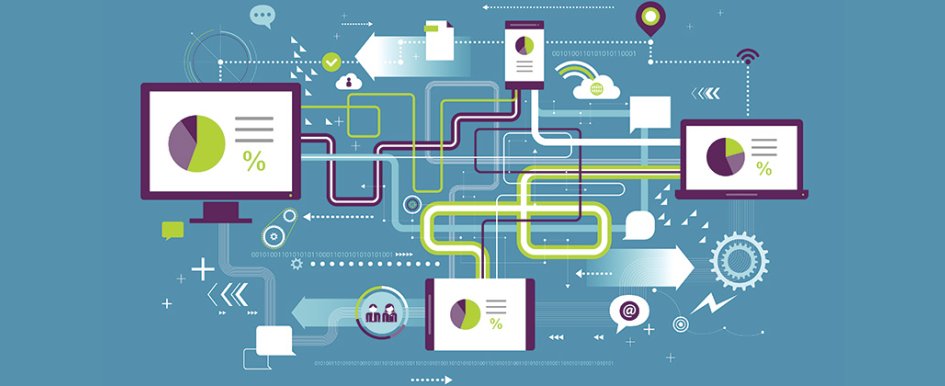
When you look at technology expenditures, successes and failures, there are many moving parts to consider—from the actual purchase of the software to implementation cost, ongoing maintenance, networking and equipping employees to use the new technology. The following paragraphs review many different aspects of technology solutions, why they were successful, why they failed and some tips to consider in the future. These could include a solution that you initially passed over, or one that you have already purchased that never achieved the desired expectation.
1. Cloud Computing
Cloud computing has been around for more than 30 years. Companies have either fully embraced cloud computing or they avoided taking the leap and remained with in-house systems. The reality of how cloud computing fits into the future of corporate America is becoming clearer through the use of private, public and hybrid cloud systems. Corporate America has embraced the use of hybrid cloud systems more than private or public cloud systems because of the variations and limitations of bandwidth, security concerns and the end user experience. Hybrid cloud systems solve many issues with performance, printing and large file management that public and private clouds often leave lacking.
However, with the popularity of cloud computing, we are also learning that it is not for every company, and depending on the expectations and corporate culture, may not be a fit at all. Studies have shown that companies have shifted gears back to an in-house system or to hybrid cloud systems to regain a more consistent user experience. Many companies jumped on cloud computing because of the perception of savings. In a Computer Weekly survey, 80 percent of CIO's were concerned with the hidden costs of cloud computing. Although you may be saving in some areas, such as hardware cost, the overall budget impact around cloud computing runs about the same as having systems in-house. Those dollars are simply being spent differently than in a traditional model.
It is important if you are considering either moving to the cloud, moving out of the cloud or to some hybrid version that you take time to research your application options, limitations of your infrastructure and fully understand how you will integrate cloud computing into your business.
2. VoIP Phone Systems
Voice-over IP phone systems has come a long way in the last three to four years, many companies looked at VoIP technology in the past and passed it due to limitations in quality of service, functionality or concerns over the impact of running a voice network on top of your data network. In the past, there were a lot of concerns regarding network speed, cost of bandwidth to support both data and voice on the same network and overall costs associated with VoIP.
Today, VoIP technology will only get better from this point forward. As the technology has improved, so has the level of understanding on how to properly implement and manage a network that has both voice and data riding on it. The option to utilize virtual networks to separate out the voice and data traffic and provide quality of service and priority to voice traffic has greatly improved the overall user experience. The improvements in router and switch technology that targets networks running both voice and data has provided us with the ability to better manage and monitor these individual virtual local area networks. Lower cost and more available bandwidth has also improved the overall budget impact of managing a VoIP strategy.
Not all VoIP systems are created equal. There is in-house VoIP and hosted or Cloud VoIP systems. An in-house VoIP system is basically part of your in-house private branch exchange (PBX) phone. The VoIP functions only work internally to your business, such as other office locations or remote jobsites that are physically connected to your network. Cloud or hosted VoIP systems ride completely over your data network and Internet connection, and they do not require an additional primary rate interface (PRI) phone line to make calls through the traditional phone system.
Some easy advantages to a cloud-based VoIP system would be the redundancy and disaster recovery processes that are built into the off-site system already in place.
3. Data Mining and Intelligence
Data mining and data intelligence is often overlooked in many industries. The data that companies have collected over the years has huge value. Data mining technologies allow you to develop trends based on your clients' buying habits and budgets and gives insight into what works and what doesn't. Additional strategies that can be developed through the use of data mining and business intelligence include marketing strategies, customer retention programs and improved customer satisfaction processes.
Historically, many companies passed on business intelligence software because they were not standardized on the data collection point. Companies have gone through a consolidation of sorts, going from separate accounting systems, project management systems, estimating systems and customer relationship management to a single system that is holding the data and then feeding it to the additional ancillary programs. This really allowed data mining software and business intelligence software to bring meaningful value to organizations that use this technology.
There are many reasons companies pass on technology initiatives, such as disconnected data, excessive spreadsheets or not having the infrastructure in place to support many advanced technology features. Reevaluate your technology strategy and build a business model that will allow your company to take advantage of the many opportunities that new hardware and software technologies can bring to your company.
